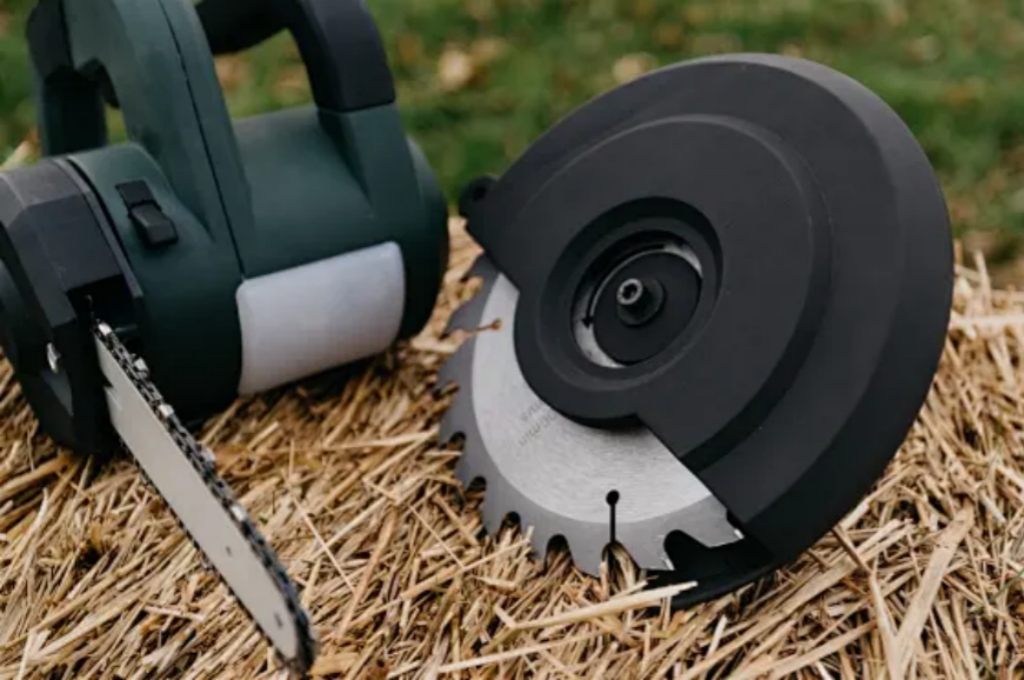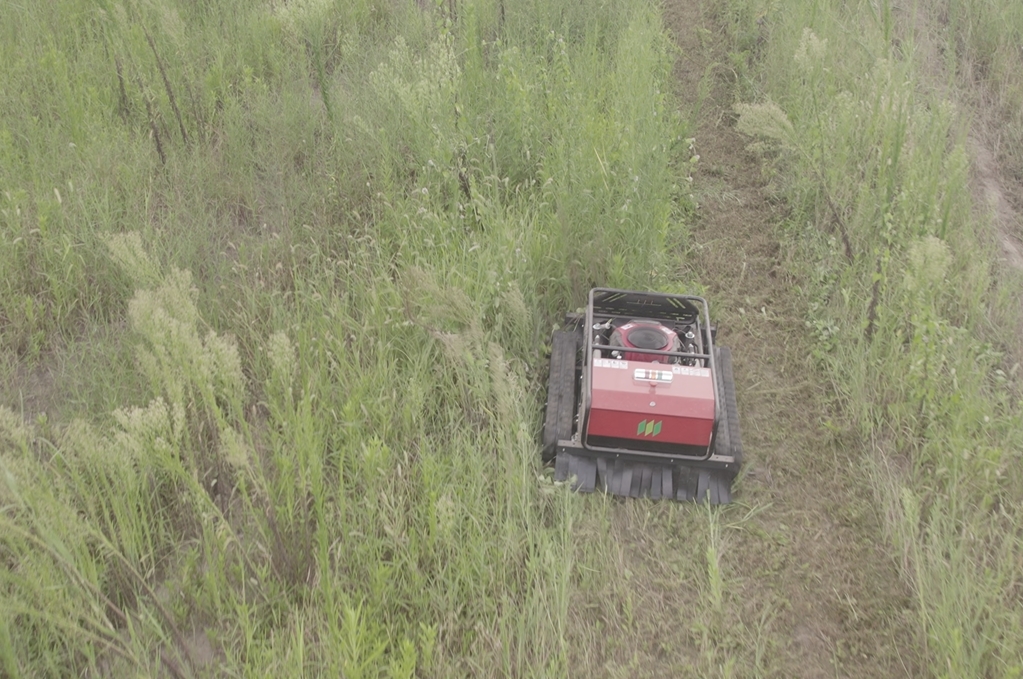Mowing a lawn on a hilly terrain can be a tough task, but selecting the right mower for the job can make it much simpler!
At マウントエナジ-ジャパン株式会社, our experts suggest opting for a remote-controlled lawn mower for enhanced efficiency, safety, and convenience. Keep reading as we explore the best techniques for tackling steep hills, recommend top mower options, and guide you in choosing the perfect one for your specific needs.
Key Takeaways
Remote-controlled mowers are an excellent choice for hilly landscapes, offering safe, distance-operated control, automatic shut-off, and obstacle detection capabilities.
Hilly terrain can pose various challenges, such as safety risks (slips, falls, rollovers), uneven cutting, increased physical strain, and faster wear and tear on equipment.
Riding mowers are suitable for gentle slopes, while stand-on and zero-turn mowers perform best on moderate inclines. For steeper slopes, self-propelled walk-behind mowers provide better control and stability.
When selecting a mower for hilly areas, it’s important to consider factors like the terrain, yard size, power source, traction needs, safety features, and the drive system.
Difficulties of Mowing on Hilly Terrain
Mowing hilly terrain comes with several challenges that can make the task both difficult and hazardous. Understanding these issues can help you plan your lawn care more effectively and safely.
Safety Risks: Mowing on steep inclines significantly raises the risk of slips, falls, and mower rollovers, posing dangers to both the operator and the equipment.
Equipment Damage: Operating on slopes places extra strain on the mower, leading to faster wear and tear on critical components like engines, blades, and drive systems.
Uneven Cuts: Achieving a uniform cut on hilly terrain is tough. The slope can cause the mower to scalp the grass in some spots while leaving it too long in others, resulting in an uneven lawn.
Increased Physical Effort: Mowing hills demands more physical exertion than mowing flat areas. The constant need to push and navigate up and down slopes can be tiring, especially during hot weather.
Best Lawn Mowers for Hilly Terrain
Selecting the right lawn mower for hilly terrain is crucial for both safety and efficiency. Different mower types are designed to handle various slope gradients and yard sizes. Here’s a summary of the key points to consider:
Riding Lawn Mowers
Riding lawn mowers are best suited for large yards with gentle to moderate slopes. They offer comfort and speed, allowing you to cover large areas quickly. However, their high center of gravity can make them prone to tipping on steeper inclines, presenting safety risks.
When using a riding mower on slopes, it’s important to mow up and down the incline rather than across it to maintain stability. For better safety on hilly terrain, choose models with a lower center of gravity, a wider wheelbase, and added features like rollover protection systems (ROPS).
Zero-Turn Mowers
Zero-turn mowers are known for their maneuverability and ability to navigate around obstacles easily. They’re ideal for moderately sloped lawns, but they should be used cautiously on steeper hills. The design of zero-turn mowers allows for sharp turns, which can be dangerous on inclines if not operated carefully.
Lawn Tractors
Lawn tractors are more stable due to their larger size and weight distribution, making them suitable for moderate slopes. In addition to mowing, lawn tractors are versatile machines that can accommodate various attachments, such as for snow plowing or hauling, adding to their overall utility.
Stand-On Mowers
Stand-on mowers combine the benefits of both walk-behind and riding mowers. They provide excellent visibility and control, making them ideal for moderately sloped lawns. With a low center of gravity and a stable platform, stand-on mowers reduce the risk of tipping.
Their compact size and agility make them perfect for properties with narrow spaces and obstacles. Stand-on mowers are particularly favored by professional landscapers for their efficiency and ease of use on hilly terrain.
Walk-Behind Mowers
Walk-behind mowers are versatile, offering good control and making them a safe choice for a variety of slopes. They come in both push and self-propelled versions. Self-propelled models are especially useful on hilly terrain, as they require less physical effort to operate.
These mowers allow the operator to walk behind and guide the machine, which helps reduce the risk of slipping. For very steep inclines, walk-behind mowers with high-traction wheels and powerful engines are recommended for more effective handling of the terrain.
Remote-Controlled Lawn Mowers for Hills
Remote-controlled lawn mowers allow you to operate the machine from a distance, avoiding the hazards of steep slopes. Equipped with durable tracks or high-traction wheels, they offer excellent stability and grip on uneven terrain.
These mowers are ideal for hard-to-reach, steep areas and can handle a range of slope gradients with ease. Advanced features like programmable mowing patterns and obstacle detection ensure thorough, safe lawn maintenance on challenging landscapes.
Key Considerations When Selecting a Lawn Mower for Hilly Terrain
Thinking about purchasing a lawn mower for your hilly yard? Here’s what you should consider to choose the right one for your needs.
Terrain and Yard Size
Start by assessing your yard. Take note of the steepness of the slopes, the overall size of your lawn, and any obstacles or tight spaces you need to navigate. For smaller yards with mild slopes, a walk-behind mower should suffice. For larger areas with steeper inclines, a robotic mower, remote-controlled mower, or self-propelled walk-behind model may be more efficient.
Power Source and Engine Type
Gas-powered mowers offer more power and longer run times, making them ideal for large, challenging yards. However, they tend to be heavier and require more maintenance. Electric mowers, on the other hand, are lighter, easier to maintain, and more eco-friendly, but they might struggle on steep or expansive areas due to limited power and battery life. Consider the size of your yard, your preference for maintenance, and environmental impact when choosing between the two.
Drive System
The drive system plays a crucial role in maintaining control and minimizing physical effort on hilly terrain. Self-propelled mowers are a great choice for slopes, as they use engine power to drive the wheels, easing the effort of pushing the mower uphill.
There are two primary types of drive systems: front-wheel drive (FWD) and rear-wheel drive (RWD). FWD mowers are easier to maneuver on flat ground but can lose traction on hills. RWD mowers provide superior traction and stability on inclines, making them the better option for hilly yards. For maximum control, consider an all-wheel drive (AWD) mower, which offers top-tier traction on all types of terrain.
Safety Features
Safety should always be a priority when mowing on hills. Look for mowers with features that enhance stability and control, such as wide tires with deep treads for improved grip, a low center of gravity to reduce tipping risks, rollover protection systems, front bumper guards, automatic braking, and blade stop systems.
It’s also important to select a mower with easy-to-reach controls and ergonomic grips, so you can maintain a firm hold and react quickly in case of an emergency. Always follow the manufacturer’s guidelines for safe operation on slopes.
Lawn Mower for Hills: FAQs
How Should I Mow Around Obstacles Like Trees or Rocks on a Hill?
When mowing on hilly terrain with obstacles, consider using a walk-behind mower or a riding mower with good traction. Zero-turn mowers are especially helpful for navigating around trees, rocks, and other obstacles, as they offer excellent maneuverability and precision in tight spaces.
How Often Should I Service a Mower Used Regularly on Hills?
After each mowing session, it’s important to clean the mower thoroughly, removing grass clippings, dirt, and debris. Every week, check the air filter, oil levels, and blades to ensure they are in good condition.
Once a month, perform a more detailed inspection. Check the tires for proper inflation and wear, lubricate the moving parts, and inspect the spark plug for any signs of damage or wear, replacing it if necessary.
At the start and end of the mowing season, give your mower a full service. Change the oil, replace the air filter, sharpen or replace the blades, and inspect the fuel or battery system. It’s also a good idea to have a professional conduct a thorough service at least once a year to keep your mower running smoothly.
Related Post:
7 Essential Features to Consider in a Remote-Control Slope Mower


